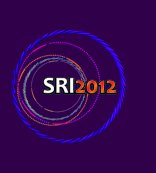Speaker
Dr
Ralf Hendrik Menk
(Sincrotrone Trieste, Italy)
Description
Most of the low energy imaging detectors used at Elettra are based on micro channel plates in combination with cross delay line technology, originally developed for time resolved photoelectron spectroscopy in conjunction with pump- and-probe systems. Due to the architecture of the acquisition electronics, the detector correlates each event (electrons or photons) with its arrival time accomplishing a time resolution conform to pump-and-probe experiments on the picoseconds scale for a global input rate of up to 4 Mcounts/s.
Owing to the adjustment of its direct bandgap down to 0.8 eV quantum well (QW) structures have what it takes for low energy photon detection. QW structures are planar objects in which electrons are confined in one dimension. Compound semiconductors such as InGaAs / InAlAs can be used to fabricate QWs with several combinations of barrier and well materials, allowing for a tuning of the electron band gap in a wide spectral range. Depending on the external circuitry internal charge amplification mechanism can be applied for very low signal levels. Moreover, the high mobility of the charge carries allows the design of very fast photon detectors with response times in the pico second range and below. Spatial resolution can be obtained by lithographic segmentation.
Primarily for beam diagnostics of segmented mono crystalline CVD diamond detectors have been developed that allow simultaneous monitoring of beam intensity and position even on a single bunch level for Elettra’s soft x-ray beam lines and on a single shot basis for the Fermi FEL.
Author
Dr
Ralf Hendrik Menk
(Sincrotrone Trieste, Italy)
Co-authors
Dr
Giorgio Biasiol
(CNR-IOM, Tasc, Trieste, Italy)
Dr
Giuseppe Cautero
(Sincrotrone Trieste, Italy)

